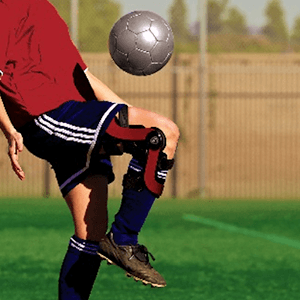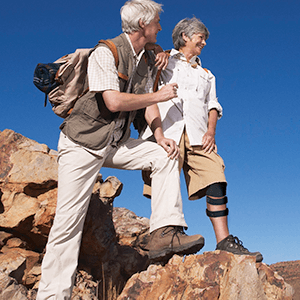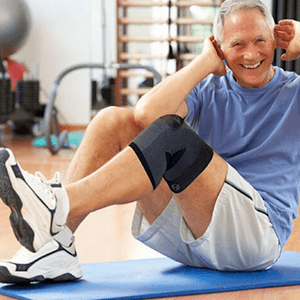Knee Pain
For many people, knee pain in and around the knee joint can be an unfortunate reality of daily life.
For some people, their condition is acute and the treatment is fairly straight forward. For others, (eg. moderate to severe knee arthritis) their condition is chronic. Typically, these patients are not expecting to suddenly be “cured” of their pain. However, they are looking for ways to reduce the pain, thereby helping them to return to normal activities.
Please feel free to look below at some of the more common conditions we treat.
[/spb_raw_html]
Here are some conditions we can help you with.
Osgoode-Schlatter’s Disease
Osgoode-Schlatter’s Condition
Not to worry … it’s not actually a disease, but rather a type of “growing pain” that affects the knee. It is one of the most frequent causes of knee pain in children. It occurs most commonly in active children between the ages of 9 and 16 years, and often during a “growth spurt”. Both boys and girls are equally affected. It is often found to be activity related pain found a few inches below the knee cap. It causes swelling in the area and tenderness to the touch. Sports requiring a lot of running, jumping, squatting or kneeling are often associated with this condition.
Chondromalacia Patella
Chondromalacia Patella
This refers to an irritation and ultimate damage behind the knee cap (patella). This is a common cause of knee cap pain and is often called “runner’s knee”. Normally the knee cap glides smoothly on the knee joint when the knee is bended. However in some individuals, the knee cap can rub on one side of the joint and the smooth cartilage surface on the back of the bone becomes irritated. This misalignment or abnormal tracking of the knee cap may be caused by a muscular imbalance involving the muscles around the knee and/or due to alignment issues of the foot. Women tend to be more often affected than men possibly due to anatomical differences between the two sexes.
Patello-Femoral Syndrome
Patello-Femoral Syndrome
The syndrome refers to pain around and behind the knee cap. It is linked to, but differs from Chrondromalacia Patella in that the latter refers to actual fraying and damage to the underlying patellar cartilage. Patello-femoral syndrome typically occurs with activity and often worsens when going up or down stairs, steps or hills. Like Chondromalacia Patella, repetitive contact of the back of the knee cap with the upper leg bone (femur) and/or maltracking of the patella is the likely cause. There are a number of potential factors involved in this condition. These include: “flat feet”/overpronation, “high arched feet”/oversupination, and muscular causes. Often exercises and physical therapy is prescribed and footwear and orthotics are closely analyzed to ensure proper foot/leg alignment.
Illiotibial Band Syndrome
Illiotibial Band Syndrome
ITB is one of the leading causes of knee pain in runners. The ITB is a band of tissue that runs from the pelvis to below the knee along the outside of the thigh. It may initially feel like a mild “stinging” sensation just above the knee joint, but can become very painful with swelling or thickening of the band as it rubs over the outside of bones of the knee. It often affects athletes, but it also commonly occurs during pregnancy and often affects the elderly. The common causes of this condition include: high or low arches, supination (outwards rolling of the foot and ankle), uneven leg length, bowed legs and weak musculature.
Related Products
Here are some of the products and services listed on our website to help give you some perspective of what we do and how we can help you. If you have any questions please email us, or book an appointment with one of our specialists.





